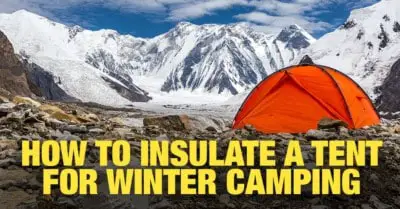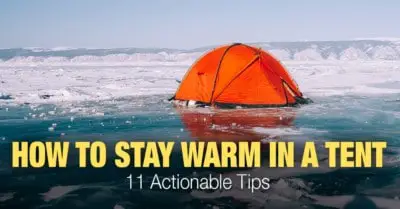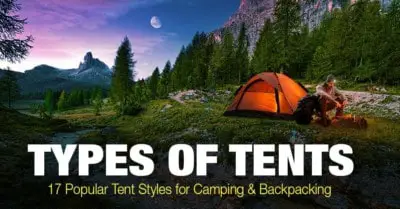Are you planning a camping trip soon, and you’re wondering, “do I need a tarp under my tent?” You’ve heard a tarp will keep you dry, but then again, it’s one more thing to lug around until you reach the campsite. Is a tarp necessary?
Although a tarp is an optional piece of equipment, it’s a good one to have to keep the bottom of your tent waterproof and undamaged from rocks and other outdoor debris. The tarp also keeps your tent clean, dry, and comfortable on your camping trip.
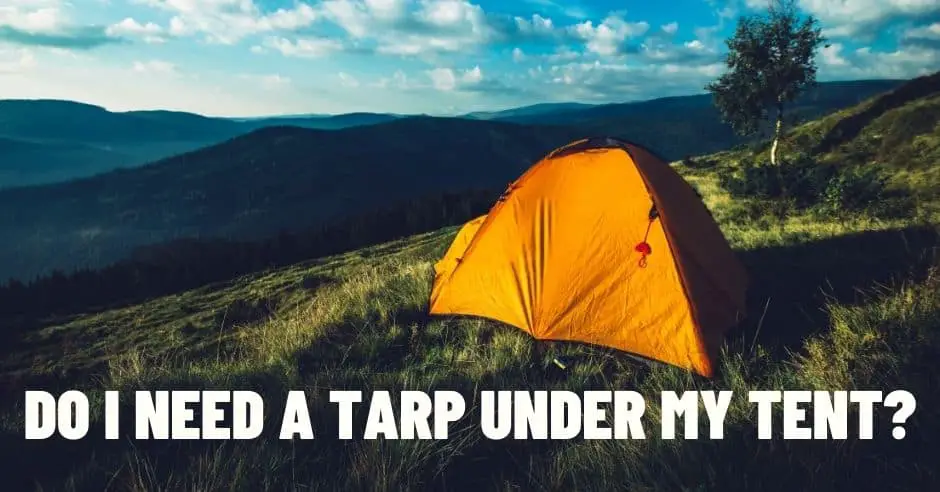
If you still want more information before you commit to buying a tarp for your tent, you’ve come to the right place. In this article, we’ll elaborate further on why a tarp under a tent is always a good idea. We’ll also talk about how big your tarp should be.
What Is the Purpose of a Tarp Under a Tent?
A tarp, in this case, is short for tarpaulin, a large cloth or sheet made of polyethylene, canvas, or polyester with a polyurethane coating. The grommets along the corners and sides of a tarp allow you to suspend the tarp or tie it securely to the ground.
Keeping that in mind, what purposes does a tarp serve when under a tent? Let’s talk more about that now.
1.Protects Your Tent Bottom from Damage
If your tent floor is only water-resistant instead of waterproof, you’ll find out within a couple of camping trips. By that point, ground moisture might begin seeping into the bottom of the tent. What’s worse is that the thin tent bottom can accrue damage from the hard ground too.
If that’s not what does it, then through general use and the ensuing wear and tear, you create damaging friction between the ground and the tent bottom.
Tarps are always waterproof, never water-resistant. They add another layer to your tent bottom, so if that happens to be waterproof as well, the barrier against water is even stronger.
That secondary barrier from the tarp can also maintain the longevity of your tent bottom. It will be less prone to holes, punctures, and other damage.
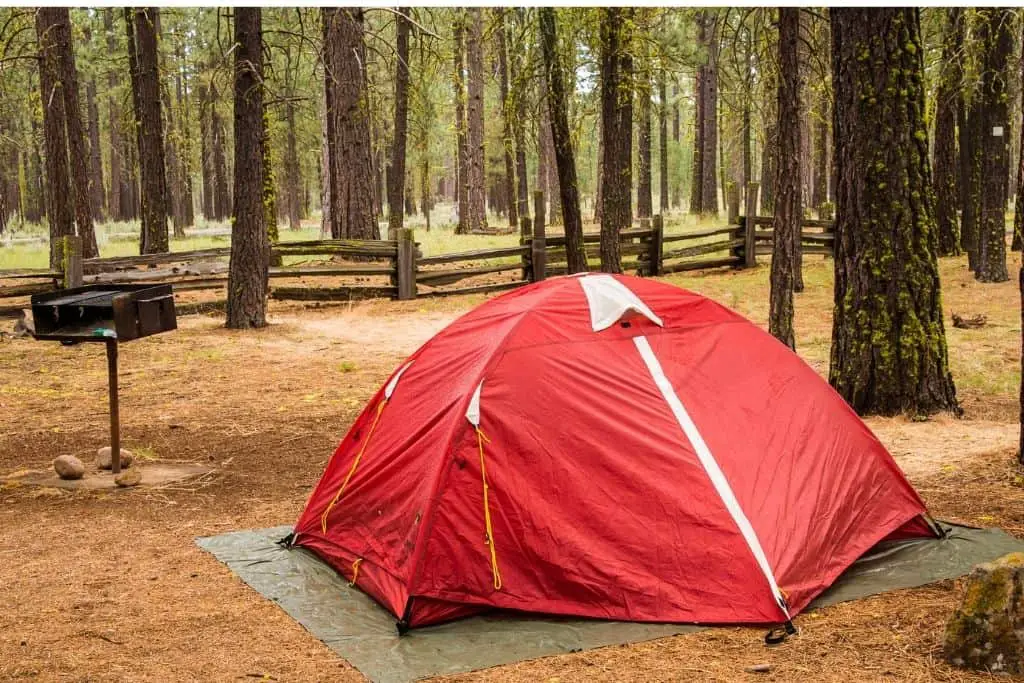
With no worries of water coming in, the risk of the tent developing mold and/or mildew significantly lowers. Not only do the bacteria create stains on your tent that can be very difficult to remove, but mold and mildew are not safe to breathe in. If a fellow camper is allergic to mold and mildew, they can have very severe reactions.
2. Keeps You Dry
Using the information above, we can deduce that not all tents are waterproof. If your tent is water-resistant, then the more frequently it gets soaked in downpours as well as the more use the tent receives, the faster its water-repellant coating will disappear.
Technically waterproof tents aren’t even always great at sloughing off water. In really bad storms especially, these tents can leak when you need them most. You can see now why a tarp under your tent is so advantageous.
Of course, it won’t rain every time you go camping (hopefully, at least!). Even if it’s a dry day and the weather has remained relatively dry for several days, the ground beneath your feet is always moist. As the moisture evaporates and reappears on the ground, you will likely feel it. Well, unless you have a tarp, that is.
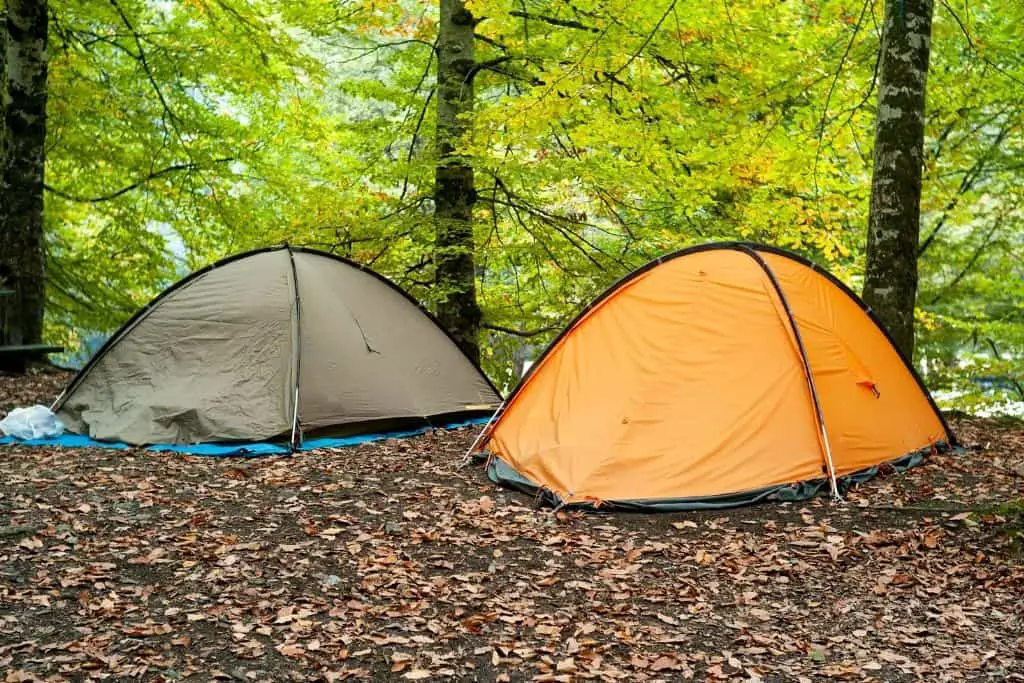
Staying dry is about more than just your comfort. If you’re soaking wet and in chilly conditions, you and your fellow campers are much more likely to come down with an illness such as the common cold.
3. Maintains Tent Cleanliness
You always dread when your camping trips come to an end, and not only because the fun is over. The end of your trip also marks having to release your tent from the ground and rinse off all the dirt, mud, and other messes.
With a tarp under your tent, it’s the tarp that you’d have to clean, as it would be dirty. Your tent probably won’t look immaculate, but it’ll be far cleaner than if it had made direct contact with the ground for a day or more.
Do I Need a Tarp Under My Tent?
Are you still debating whether a tarp under your tent is a necessity?
One reason we didn’t talk about in the last section that we want to touch on now is comfort. Your tent floor is literally all that separates you from the cold, hard ground. As mentioned before, that ground often isn’t very comfortable. Beneath your tent can be unyielding rocks, packed dirt, dips, and divots. The thin tent bottom isn’t enough to pad what’s underfoot.
When you go camping, you long for the moment when you can take off your shoes and finally unwind. You don’t want that experience to be ruined because the ground underneath you is too painful and wet to walk on, but that’s a very real risk. That and you could trip if you step over a sudden dip in the dirt.
See also: Types of Tents – 17 Popular Tent Styles
That’s just walking on a tent floor without a tarp. Have you tried sleeping on the tent bottom? Unless you have the world’s fluffiest sleeping bag, then you’re going to feel the hard ground beneath you as you try to get some shut-eye.
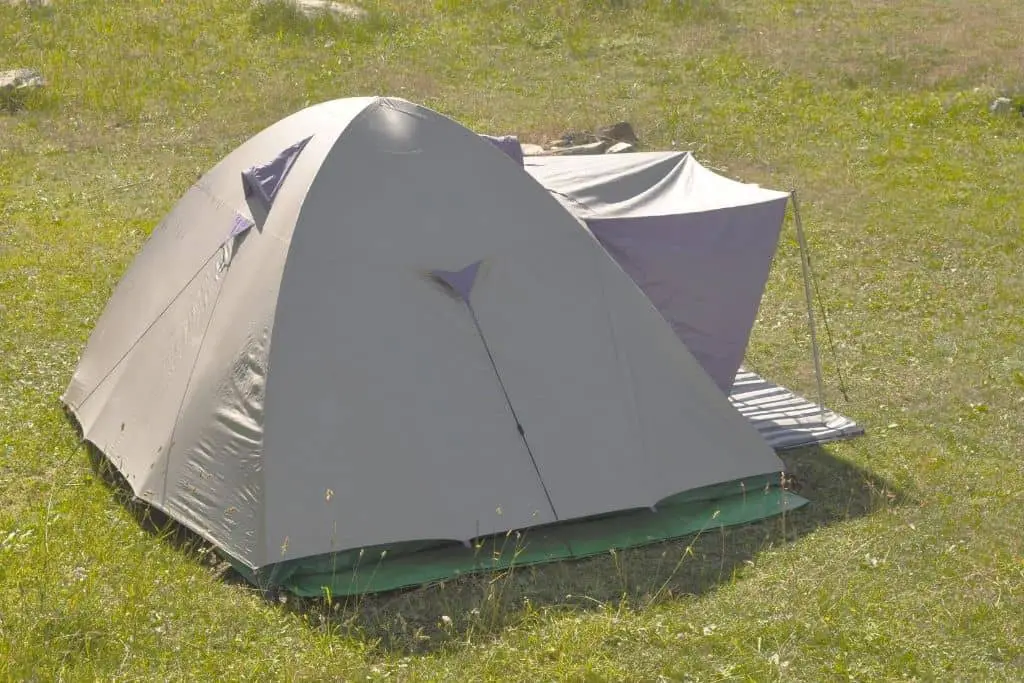
To say that’s uncomfortable is an understatement. Not only do you feel every natural shape and texture of the earth beneath your body, but the coldness and moisture from the ground can seep in too since your tent bottom is so thin. We hope your sleeping bag is filled with down or you’ll be shivering all night.
A tarp pads the floor of your tent so you can sit, walk, and sleep comfortably and insulates the tent too. The heat that’s created within your tent will remain so you feel nice and toasty even if it’s cold outside.
Tent Footprint vs. Tarp: What’s the Difference?
Now that you think of it, isn’t there already an accessory designed for just these same purposes? You might be talking about a tent footprint, a type of ground cover designed for maintaining your tent and preventing floor damage.
Can’t you use a tent footprint instead? Is it really all that different than a tarp? Indeed, so let’s talk more about this now.
Price
One very noticeable difference between a tarp and a tent footprint is the cost. Tarps, despite their size, are pretty economical. You won’t part with a lot of money to own a good-sized tarp. Tent footprints are designed for particular tent makes and models. Otherwise, how could you be sure your tent footprint would fit?
Due to their specificity then, tent footprints tend to be more expensive. What’s worse is that you can’t even use them interchangeably. If you buy new tents fairly often, you can spend a lot of money on matching tent footprints.
Weight
Whatever the material that’s used to construct your tent, the tent footprint should be more of the same. Considering that most tents are nylon or polyester, a tent footprint doesn’t have a lot of weight to it. This can be convenient when packing your camping bag, as the tent footprint won’t leave your shoulders achy as it adds to your load.
See also: Are Propane Heaters Safe In A Tent?
If you’ve ever worked with a tarp in non-camping applications, then you know they’re bulky and sometimes heavy.
Size
Tarps are also much larger than tent footprints. The footprint should fit only the bottom area of your tent, nothing more, nothing less. A tarp could–if you wanted it to–theoretically cover your entire tent with room to spare. That all depends on the size of tarp you buy, of course, but even smaller tarps likely outsize tent footprints.
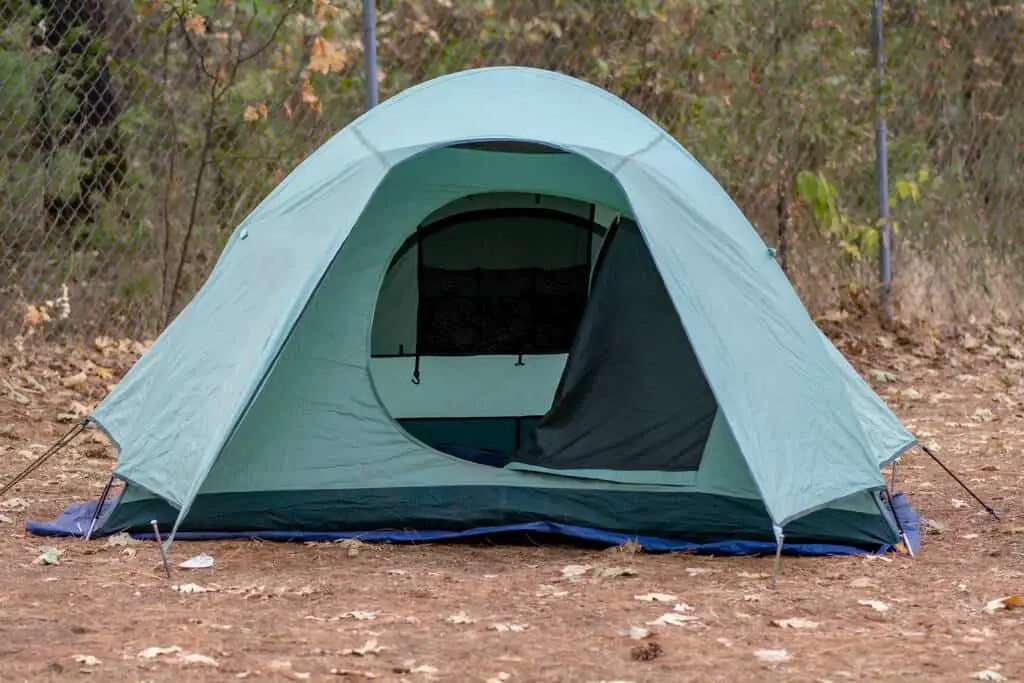
Setup
How you put up a tarp versus a tent footprint also varies. Tarps, as we covered earlier in this article, have side grommets for tying down the tarp where you want it. Tent footprints lack those grommets, which can make the setup more difficult for some.
Versatility
Last but certainly not least is the differences in versatility. Remember, a tarp can go on top of your tent or under it depending on your preferences (more on this momentarily). The size of a tent footprint means it’s ill-suited to be used atop your tent for any reason.
Should You Put a Tarp Over a Tent?
The grommets of a tarp make it ideal for staking some holes through those openings and then draping the tarp over your tent. This is completely optional, but if you can do it, we would absolutely recommend it.
See also: How Do You Stay Warm in a Tent
Why? The tarp prevents your tent from getting wet, perhaps even more effectively than using it as a tent footprint. it’s torrential rain and the water is deluging down the sides of the tarp, then maybe some will reach your tent, but otherwise, the tent should be nice and dry.
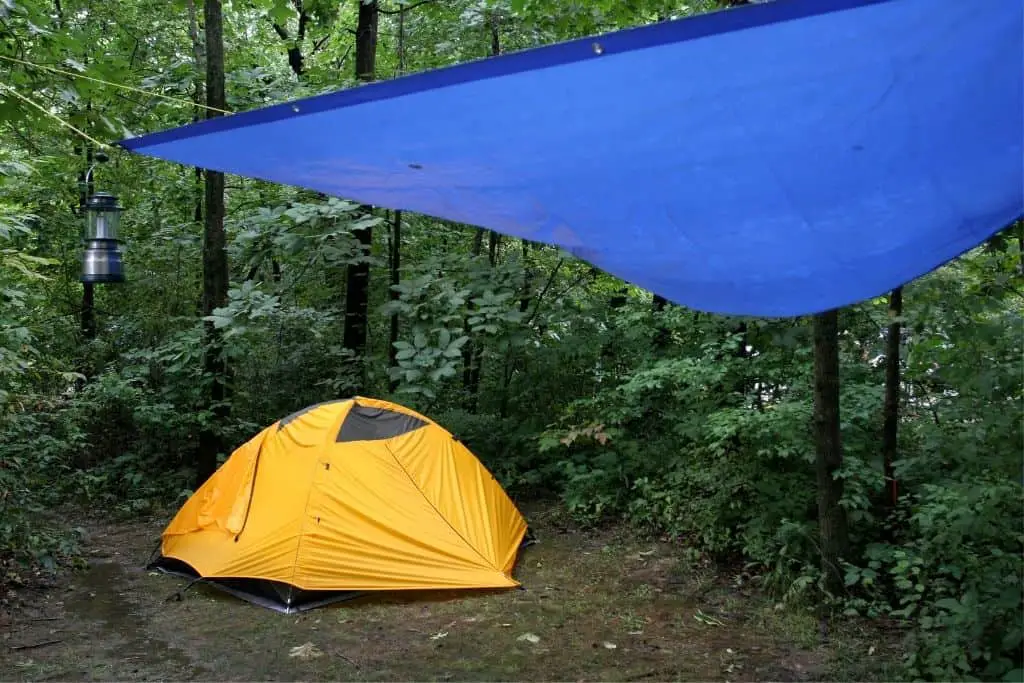
Another great reason to hoist your tarp over your tent is for preserving your gear, including pricy electronics. These items will stay reliably safer (and drier) so you can bring that DVD player or computer without as much worry.
Should a Tarp Be Larger Than a Tent?
You have but one more question. Should your tarp be larger than your tent? Actually, no. If the tarp outsizes the tent, it will accumulate too much water, which will then flow under and into the tent. Instead, your tarp should be sized to your tent or thereabouts.
Do I Need a Tarp Under My Tent? | Conclusion
Using a tarp under your tent will keep you comfortable and dry, making your camping experience better overall. Don’t forget that you can also erect a tarp over your tent for more protection!



